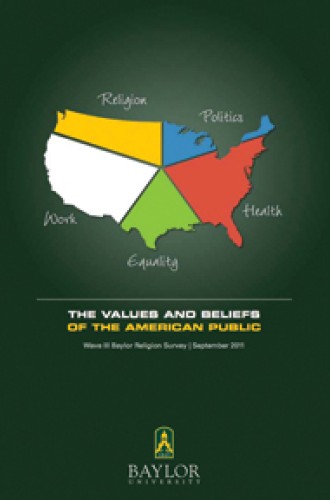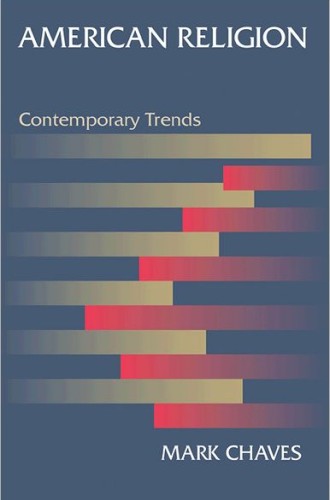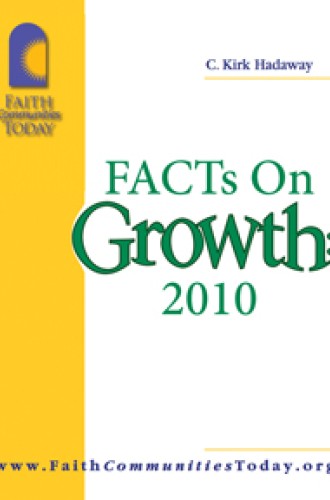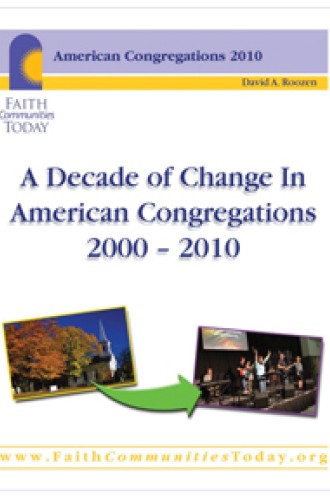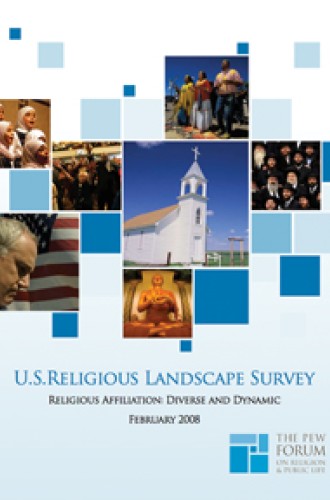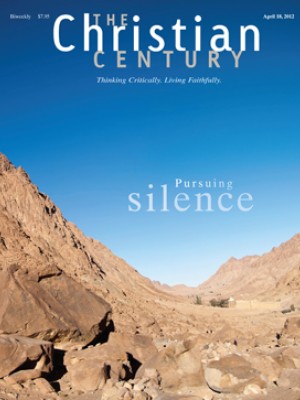Crunching the numbers
Though giving to religion in the U.S. topped $100 billion in 2010—putting it at nearly 1 percent of GDP—no monthly index charts the nation's leading religious indicators. Even the Census Bureau, the nation's most comprehensive data-gathering enterprise, avoids collecting basic information about religion. No constitutional provision bars the collection of such information, but the government has long hesitated to intrude in the affairs of religious bodies. So most of what we know about religion in America is based on what individuals and groups reveal voluntarily to independent researchers. Fortunately, a small number of public foundations, most notably Lilly Endowment, the John M. Templeton Foundation and the Pew Charitable Trusts, continue to fund basic research on the state of American religion.
One of the most comprehensive recent surveys of American religious participation was reported in 2008 by the Pew Forum on Religion & Public Life. The survey included over 35,000 respondents, making it possible to present detailed demographic and attitudinal data on large and small religious communities.
Read our latest issue or browse back issues.
The Pew report notes that the American religious landscape is increasingly fluid and competitive. Fully 28 percent of Americans have changed their religious affiliation since childhood, a percentage that rises to 44 percent when interdenominational "switchers" within Protestantism are included. The ranks of the religiously unaffiliated are now 16 percent of American adults and fully a quarter of those age 18 to 29.
Protestantism continues to lose market share and will soon be a minority religious tradition. It remains fragmented: 26 percent of Americans identify with evangelical Protestant denominations, 18 percent with mainline or oldline Protestant churches, and 7 percent belong to historic black churches.
Baylor University's Institute for Studies of Religion is emerging as another significant resource on religious change and demography. ISR has directed three large national surveys conducted by the Gallup Organization. The latest, published in September 2011, The Values and Beliefs of the American Public, looks especially at health and religiosity, the relationship between entrepreneurship/work and religion, religion and the American ethos (individualism), and the relation between religious beliefs and views on politics and same-sex marriage.
The researchers probe believers by testing their response to the statement "God has a plan for me." Those who strongly agree with this statement have lower income and educational levels than other Americans and are more likely to believe that the U.S. economic system is fair and does not require governmental intervention. They tend to view government as too intrusive, to believe that anything is possible through hard work and that healthy people don't deserve unemployment benefits. These findings illuminate some voter dynamics evident in the 2012 presidential race.
Much of the Baylor report explores differences between liberals, moderates and conservatives. Not many surprises here. Self-described liberals, we learn, are less likely than self-described conservatives to say they believe in ultimate truth but more likely to believe that all religions worship the same God.
The most interesting portions of the Baylor study deal with attitudes toward homosexuality and civil liberties for gays and lesbians. The researchers find that a majority (65 percent) of Americans now favor same-sex civil unions and that 47 percent favor gay marriage and oppose laws prohibiting it. Attitudes toward gay civil liberties are major points of division between liberals and conservatives: 70 percent of conservatives support a law banning gay marriage, while only 14 percent of liberals do so.
The past two decades have seen two important methodological breakthroughs that have improved our ability to observe trends and changes in congregations. One advance has been through the work of Faith Communities Today, a project initiated in the late 1990s at Hartford Seminary's Institute for Religion Research. The project brings together representatives from most of the larger Christian communions and from Jewish and Muslim religious bodies. Each of more than 20 groups draws a representative sample of its member congregations and administers a common questionnaire. Four national surveys have been conducted, and over the course of the project 28,789 randomly selected congregations have participated.
Two FACT reports were released in 2011. In A Decade of Change in American Congregations 2000-2010, project director David A. Roozen reports that the past decade has shown "a slow, overall erosion of the strength of America's congregations." The report documents a steep drop in congregations' financial health and continuing high levels of conflict, along with aging memberships. It also shows that congregations are increasing their interaction across faith lines and are giving more attention to innovative worship practices. Moreover, it points to the relative vitality of congregations that serve racial minorities and immigrants.
FACT underscores the aging of mainline congregations and the relative absence of young adults in these churches. Roozen reports that persons age 65 or older constitute more than a third of the members in a majority of old-line Protestant congregations, and the same is true in almost a quarter (23 percent) of evangelical Protestant churches.
In our 1987 book American Mainline Religion, Wade Clark Roof and I suggested that in the future "liberals will represent a smaller and smaller share of the Protestant movement," and that prediction seems safe in light of recent data. Says Roozen: "The age structure of liberal Protestantism suggests a rising death rate that, given the relatively few members of childbearing age, is unlikely to be offset by births." Demography may not be destiny for mainline churches, but it continues to present daunting challenges.
Another FACT report released in 2011 examines congregational growth and decline. In FACTS on Growth: 2010, C. Kirk Hadaway weights his sample to make it representative of the entire landscape of congregations: 23.8 percent are mainline Protestant, 55 percent conservative Protestant, 6.4 percent black Protestant, 6.4 percent Roman Catholic and Orthodox, 11.2 percent other Christian and 3.6 percent non-Christian. Hadaway then divides congregations into five growth categories, ranging from those showing severe decline to those recording greatest growth, using a scale that measures percentage change in worship attendance and net change in worship attendance between 2005 and 2010.
He finds "greatest growth" congregations are most likely located in the South and in communities experiencing population growth. Also growing are younger congregations (those organized in the past 15 years), those with a majority of members from racial minority backgrounds and those that use a language other than English. Congregations in which a majority of members are age 50 or older are very unlikely to grow. One surprising finding is that downtown or central city congregations are more likely to be growing than those in newer suburban locations.
Several attributes of the internal life of congregations are strongly associated with growth in worship attendance. These traits are: a clear sense of the congregation's mission and purpose; a sense that the congregation is spiritually vital and alive; a sense that the church is "a moral beacon in our community"; and a willingness to meet new challenges. Serious internal conflict is a very strong predictor of congregational decline.
Hadaway also looks at a number of dimensions of congregational identity and their relationship to growth. Denominational family continues to make a difference: 43 percent of conservative Protestant congregations are growing, compared to 33 percent of non-Christian congregations, 29 percent of Catholic/Orthodox congregations, 25 percent of other Christian groups and 19 percent of mainline Protestant congregations.
He cautions, however, against concluding that growth is directly related to theological orientation. "In fact," he notes, "the proportion of congregations growing is highest on the two end points: very conservative congregations and very liberal congregations (with growth rates of 39 percent and 35 percent respectively)."
A direct comparison of the theological orientation of mainline and conservative Protestant congregations reveals almost no relationship between theological conservatism and congregational growth. To be sure, conservative Protestant congregations tend to grow more than mainline congregations, but Hadaway suggests that "it is not theological conservatism per se that leads to growth, but rather something intrinsic to the evangelical/conservative Christian family and its constituency." He goes on to say that "the weakness of the mainline churches probably has more to do with pervasive problems among the mainline constituency (such as lower levels of church involvement, competing demands for time, and lower birth rates) than it does with their more moderate theology."
A second congregation-based project was conducted by sociologist Mark Chaves of Duke University. Chaves worked with the National Opinion Research Corporation at the University of Chicago to draw a sample of the congregations with which participants in the 1998 General Social Survey of the U.S. population were affiliated. In other words, Chaves took a look at some of the congregations in which a representative sample of American adults participate. American Religion: Contemporary Trends draws on the General Social Survey and the National Congregations Study to paint a big-picture portrait of changes in American religion since 1972.
Chaves takes a cautious approach, focusing on important trends that are both interesting and well documented. Chaves insists—rightly, I think—that one cannot conclude either that "American religiosity is experiencing a dramatic resurgence" or that it has declined dramatically.
Chaves points to several major trends, most of which are familiar. Americans are becoming more diverse religiously and more tolerant and appreciative of religious difference. Religious beliefs are surprisingly stable, but spirituality is more diffuse than it once was; most of those who think of themselves as spiritual also think of themselves as religious, but for a minority the much commented-upon distinction between the two is real. Changes in religious involvement are hard to pin down, because people tend to overstate their religious participation. Chaves tentatively states: "We can see clearly enough to conclude that religious involvement unambiguously is not increasing."
Participation in a congregation, Chaves maintains, is still the most common form of religious involvement. Religious leadership is changing and has become a less attractive career choice. Public confidence in religious leaders has declined precipitously.
Chaves points out that liberal Protestantism is the only major religious group to "have experienced significant, sustained decline in recent decades." Religious involvement is more closely linked to conservative social attitudes than in earlier times. At the same time, "as a set of ideas, religious liberalism steadily has gained ground in the United States, whatever the fate of the denominations most closely associated with it."
These recent studies reveal the significant changes that have taken place in American religion over the past several decades. Rising costs at all levels, declining memberships, lower levels of denominational loyalty and competition for philanthropic dollars have combined to create a financial crisis for most organized religious communities. Some of the healthiest organizations (such as many colleges and hospitals) are the ones furthest removed from ecclesiastical control.
The crisis that emerges from these snapshots of religious life is twofold. The first is the growing inability of many mainline institutions to maintain themselves. The second crisis may be more important in the long run: the absence of resources for building new institutions to meet current and future needs.
Across the denominational spectrum, religions have fought to maintain the institutional forms and practices that were put in place in the 19th century to meet the needs of an expanding population. Religious groups knew who "their" people were, and the institutions they built were shaped to meet their community's needs. For example, Lutherans built schools and colleges to prepare immigrant Germans, Swedes and Norwegians for careers on the frontier; Presbyterians started seminaries to prepare learned clergy for their congregations; Catholics and Jews founded hospitals to provide health care for their people.
Over time each group developed remarkably similar patterns of connecting their local, regional and national constituencies in order to carry out their particular mission. Formal and informal clusters of denominational groups came into being to express similar theological, ethnic and mission commitments. Most of those institutions still exist in some form, albeit in slimmed-down versions.
In 1976, when I started my first full-time position as a researcher in one of the national agencies of the United Church of Christ, my boss told me that my job was "to figure out what is going on in the United States and what it means for the church's mission." I didn't realize at the time how important it would be to link these two questions. The most effective leaders I have known are those who can connect their descriptions of reality with practical agendas for action.
Social research such as the studies summarized here does not spell out an agenda, but it can inform one. The sustainability of the mainline Protestant traditions in particular depends on their ability to answer some huge questions. Can these traditions speak to the religious yearnings of younger Americans? Will they invest in reaching out to the new populations, especially to immigrants? Can they articulate a compelling message to population groups whose principal exposure to Jesus Christ and to Christianity has flowed through mostly conservative channels? Will they be able to identify, prepare and support a new generation of leaders who can help shape new forms of congregating that will be sustainable?
The challenges call for more than technical fixes. They are what Ron Heifetz has called "adaptive challenges." The last thing American faith communities need is another round of programmatic efforts to reverse declines. These haven't worked because they haven't addressed the fundamental changes that are taking place in the broader culture.


